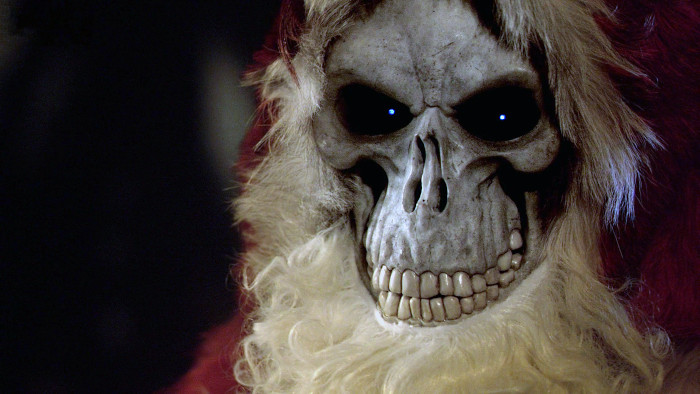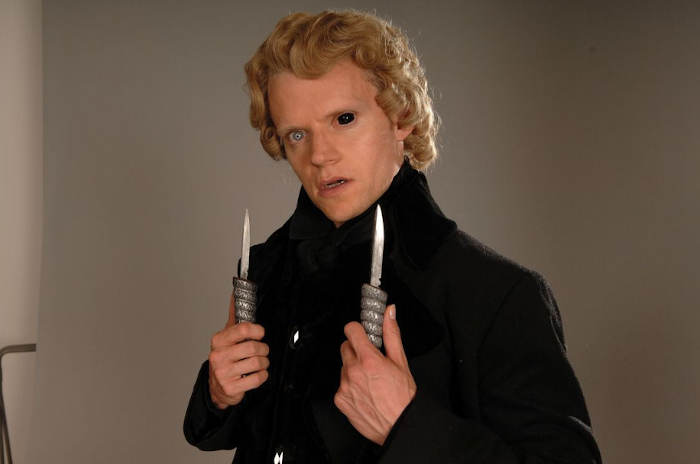For many years, Terry Pratchett was Britain’s foremost writer of fantasy fiction, until the rise of J.K. Rowling whose work is clearly indebted to his vast body of work. Indeed, in the 1990s, Pratchett was the best-selling British writer of any genre, selling over 85 million books in 37 languages. His books were often comic in nature and his most popular work remains the series chronicling the Discworld, a huge flat disc floating through space on the backs of four giant elephants which, in turns, stand on the shell of a god-like star turtle Great A’Tuin. The Colour of Magic (which Pratchett described as “an attempt to do for the classical fantasy universe what Blazing Saddles did for Westerns”) kicked the series off in 1983 and before his death in 2015 he published a further 40 novels a handful of short stories and even a few non-fiction books expanding on his ever growing and increasingly popular creation.
Several of the books, or parts of them, were adapted as animated television series by Channel 4 in the late 1990s, the animation being handled by Cosgrove Hall, creators of many a much-loved British television series, among them Chorlton and the Wheelies (1976-1979), Jamie and the Magic Torch (1976-1980), Danger Mouse (1981-1992), The Wind in the Willows (1984-1987), Count Duckula (1988-1993) and many, many more. The adaptations – the short Welcome to the Discworld (1996) and the series Soul Music (1997) and Wyrd Sisters (1997) – largely revolved around one of Discworld’s most popular characters, a skeletal personification of death (voiced by Christopher Lee) who cuts rather a benign figure, simultaneously fascinated and baffled by the human-like residents of Discworld.

Live action adaptations were thought to be harder work given the complexity of the larger Discworld story (Pratchett recalled an attempt to adapt his fourth Discworld novel, Mort (1987) for film being scuppered when the producers told him to get rid of Death – who was the book’s central character) but in 2006, Sky Television ordered the first of three two-part mini-series based on the books, beginning with an adaptation of 1996’s Hogfather.
Although it’s named after Discworld’s equivalent of Santa Claus, Hogfather is really another story about Death. The good citizens of the twin cities of Ankh-Morpork are looking forward to celebrating Hogwatch on 32nd December, but the mysterious Auditors of Reality have other ideas. This ghostly bunch of bureaucrats are determined to eradicate belief and faith and impose strict logic on Discworld and to that end, hire the Assassin’s Guild, led by Lord Downey (David Warner), to kill the Hogfather instead. The job falls to the sadistic Mr Teatime (Marc Warren) – pronounced Tee-ah-teemay – and his cronies who first storm the castle of the Tooth Fairy (Bridget Turner) in search of her collected teeth, which they plan to use to control Discworld’s children. The Hogfather goes missing and, aware that he’s responsible for the sun rising, Death (voiced by Ian Richardson) decides that he needs to take his place to avoid a catastrophe. Alternately advised, helped and hindered by his servant Albert (David Jason) and his granddaughter Susan (Michelle Dockery), Death has a steep learning cure to negotiate to head off Teatime and his gang and thwart the Auditors.

Produced for Sky by The Mob, Hogfather (on-screen, Terry Pratchett’s Hogfather), is a comparatively lavish production. The photography of Gavin Finney and set design by Ricky Eyres give it a cinematic feel, let down only by some occasionally dated CGI – not a problem exclusive to Hogfather as CGI effects tend to get supplanted by something better almost monthly. It was written (alongside Pratchett) and directed by Vadim Jean, who had made a splash with his debut film Leon the Pig Farmer in 1992, then earned the scorn of almost everyone who saw it with his ill-advised horror film Beyond Bedlam two years later. He does a fine job here, the colour-desaturated domain of Death being a particularly nice touch.
The adaptation sticks close to the plot of the novel – a little too closely perhaps as the combined running time of 189 minutes could be a bit intimidating for anyone not particularly well versed in the Discworld story. Pratchett was a skilled gag writer but his plots could often tend towards the flimsy and while this may not have mattered too much on the printed page, where his witty wordplay and punning were more than enough to get you through, the thinness of the plot doesn’t necessarily transfer well to the screen. There are lots of big ideas about the nature of belief and the necessity for it for the people of Discworld (and by extension, the audience), but they’re easily diluted by the episodic nature of the storyline.

So, the result is episodic and, at times, a bit meandering (we spend far too much time skulking about in the Tooth Fairy’s castle) but the performances are good enough to ease the way a little. As well as the aforementioned actors, the supporting cast counts Tony Robinson, Nigel Planer, Joss Ackland and Neil Pearson among their ranks and they’re all extremely good. Jason is a lot of fun as the more worldly Albert, constantly having to explain the ways of Discworld to both Death and the audience, handing out eccentric advice like “your ho-ho-ho could do with some more work… You gotta sound like you’re pissing brandy and crapping plum pudding.” His double act with Death, played onscreen by a skull-faced puppet inhabited by Dutch actor Marnix Van Den Broeke, provide much of the series’ best comic moments. Death’s deadpan misunderstanding of human nature is very funny and it’s hard to beat the sight of the skeletal Death dressed up in traditional Santa garb is unbeatable.
Elsewhere, Dockery is great in a very early role, credited under the anagrammatic pseudonym Dorckey Hellmice when she’s playing Death of Rats, an aspect of Death responsible for overseeing the transition from life to death of rodents and Richardson, in his last television role, is terrific as the voice of death. Pratchett and Jean sneak in a jokey reference to Richardson’s best-known small screen role, that of the devious Chief Whip of the Conservative Party, Francis Urquhart in the political satire House of Cards (1990), whose catchphrase “You might very well think that – I couldn’t possibly comment”, is paraphrased here.

So, it might occasionally stray from the point and it may not be consistently laugh out loud funny (though it’s always very amusing), but Hogfather is a very credible first live action attempt to bring the Discworld to life. It was, deservedly, a hit (Pratchett fans argued long and hard about whether the actors fitted the characters in their heads, but that’s par for the course) and Sky commissioned two equally enjoyable follow ups, again directed by Jean, The Colour of Money in 2008 (which adapted elements of the novels The Colour of Magic (1983) and The Light Fantastic (1986) and which starred Jason as the wizard Rincewind) and Going Postal in 2010. Sadly, no further adaptations have been forthcoming, which is a shame as they were rather well done and even those of us not fully immersed in Pratchett’s work could find much to enjoy in them.